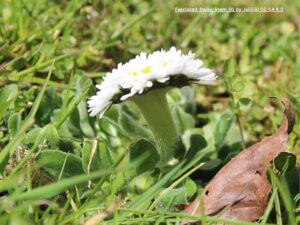15 easy eco-gardening techniques to incorporate into your yard(2)
Canada's Local Gardener
1794 Views bee hotels, bird-friendly garden, composting, eco-friendly landscaping, Eco-gardening, garden recycling, living architecture, native species, pollinator garden, sustainable gardening
- Recycle in the garden. Use newspapers and flyers for seedling pots or cut non-glossy paper up and add it to your compost pile. Don’t forget to recycle all those plastic plant pots and trays!
- Trust Mother Nature. Planting native species is not only good for preventing the spread of invasive species that are trying to choke them out in the wild but they also help our local ecosystems. Take milkweed as a perfect example. It used to flourish in the wild, now it, and the butterflies that depend on it for survival, are disappearing. So help Mother Nature and your local ecosystems – plant and support native species.
- Plant a pollinator garden. Our bee populations are suffering worldwide. Plant a pollinator garden to provide these crucial insects with essential food sources. Bees are responsible for 70 per cent of the world’s food production, planting some flowers, shrubs or trees for them isn’t really asking too much.

Plant pollinator friendly flowers — like chives. - Start a bee/bug hotel. Bee hotels as they are commonly referred to are another way to help solitary bees, like mason and leaf miners, which are becoming increasingly important as other species decline. Be sure to build and care for your hotel properly to protect the bees from predatory insects, fungus and disease. See page 28 to learn how to make a bee hotel.
- Invite song into the garden. Birds are a crucial part of our ecosystem; invite them into your garden by putting up birdhouses, bird feeders, bird baths and tasty treats. Encourage them to stay and visit, you’ll be rewarded by beautiful songs and plumage.
- Out with the weeds! Weeds are freeloaders that use up the nutrients and water in your soil overpowering the plants you want to grow. Pull them out, or if you can’t beat them, eat them! Do some research; many weeds are wonderful food sources. Dandelion leaves, yes, as in the dreaded dandelion, are delicious. Gather young leaves, blanche them to remove the bitterness, and use them as you would spinach in soups, stir fries, pastas and more!
- Living architecture. Whether it is a living wall (walls covered in plants rooted in a growing medium), or a roof garden, architecture is taking an increasingly notice-able role in eco-gardening projects. The magnitude and value of these projects have incredible benefits for our environment. It may not be for everyone, but perhaps on the roof of a garden shed or wall of a gazebo? Just saying…There are many more techniques to increase the eco-friendly aspects of your garden; these are just the simple ones. Landscape architects can also offer advice on using greywater and designing your yard to maximize resources. Whether you go it alone, seek professional advice for even more eco-friendly garden options or just incorporate one of the above suggestions, you can take comfort in knowing that everything you do is helping our planet and our environment.













Pingback: 15 easy eco-gardening techniques to incorporate into your yard(1) - Canada's Local Gardener magazine